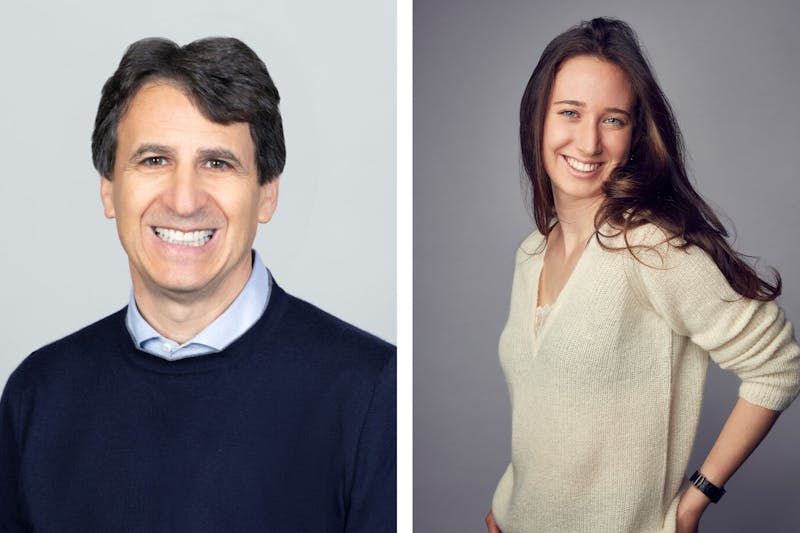Junior Amy Koenigsberg biked 275 miles in this year's AIDS Ride. It is not unusual to see Penn students riding their bicycles from the Quadrangle to Hutchinson Gymnasium, or from off-campus apartments to Van Pelt Library. But Massachusetts to New York? From Thursday through Saturday, Nursing junior Amy Koenigsberg rode a black mountain bike 275 miles from Boston to New York City during the AIDS Ride 4, a national fundraising event first started in San Francisco five years ago to benefit HIV and AIDS patients who cannot afford medical support. "It was so incredible," said Koenigsberg, who rode with 2,450 other cyclists for almost 30 hours over three days. The participants stopped periodically at rest stops during the day and camped at night in tent cities. "I was really nervous because the farthest I'd ever ridden was 35 or 40 miles, so I didn't know if I could do it," admitted the Montville, N.J., native. "My goal was to stay on the bike, no matter how slow I was going." And Koenigsberg did just that: she did not stop to walk her bike once. The AIDS Ride takes place in several locations across the country every year. In recent years, riders have biked from San Francisco to Los Angeles, Minneapolis to Chicago and Orlando to Miami. An AIDS Ride from Philadelphia to Washington took place in 1996, but the event was marred by financial scandals and controversy. It has not since been held here again. To participate, riders must raise at least $1,600, 60 percent of which benefits three health centers in Boston and New York that provide medicine and care for AIDS patients and HIV-positive people. The other 40 percent covers the cost of food and tents for the riders. This year's ride generated $6.5 million. Koenigsberg said she had no specific reasons for deciding to do the ride, but that "it just felt right." She found the experience more emotionally and psychologically challenging than physically grueling. As Koenigsberg pedaled past the throngs of cheering spectators during the last stretch of the ride and approached the finish line, the magnitude of her achievement overcame her. "As soon as I saw my parents waiting, I burst into tears," she said. Those last five blocks of the ride are called the Victory Parade. Just before this point, riders don brightly colored red, orange, yellow, blue, green or purple shirts so that the pack of cyclists looks like a rainbow riding through downtown New York. "It's not meant to symbolize gays and lesbians," said Koenigsberg. "It's just a happy, colorful, cheery way to end it." The spirit of her fellow riders and thoughts of the collective promise they had made to the ride's life-and-death cause was what carried her through the journey, Koenigsberg said. Bikers constantly encouraged and congratulated one another, especially during uphill stretches, of which there were 39. One male rider, called the Chicken Lady, dressed in drag and circled up and down a hill. He stopped for people who were walking their bikes and rode their bikes to the top for them. Others were just as willing to help. Koenigsberg was especially grateful to a man who adjusted her bicycle seat for her after she damaged her knee on the first day of the ride. Bicycling with the seat too low had caused her knee to swell, but she endured the recurring pain for the remainder of the ride. Koenigsberg didn't become a hard-core cyclist until after signing on for the ride. She was living in New York's East Village when she first saw ads for the AIDS Ride. She signed up in mid-July and prepared by working out at a gym and bicycling around Central Park. Now, after making the trek, she is already looking forward to next year's ride.
The Daily Pennsylvanian is an independent, student-run newspaper. Please consider making a donation to support the coverage that shapes the University. Your generosity ensures a future of strong journalism at Penn.
DonatePlease note All comments are eligible for publication in The Daily Pennsylvanian.







